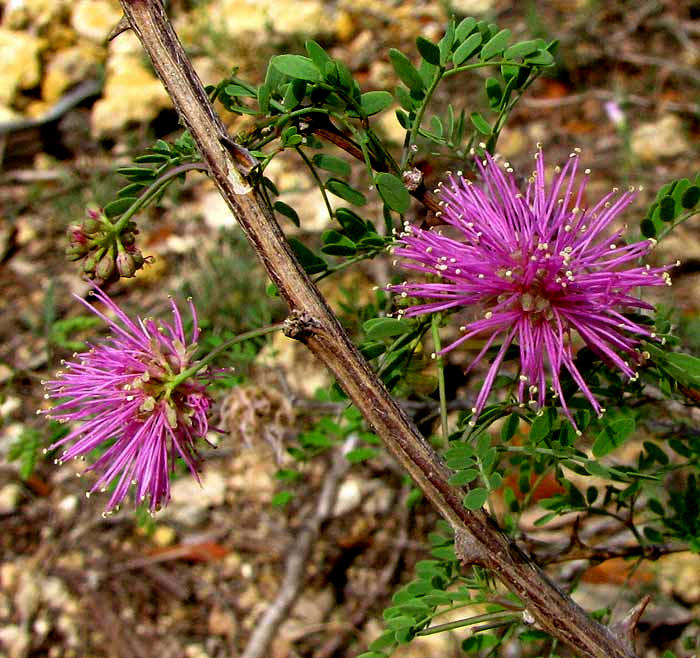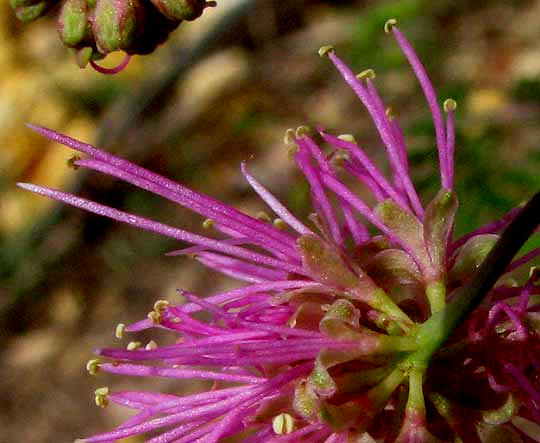Excerpts from Jim Conrad's
Naturalist Newsletter

from the the April 21, 2013 Newsletter issued from the Frio Canyon Nature Education Center in northern Uvalde County, southwestern Texas, on the southern border of the Edwards Plateau; elevation ~1750m (~5750 ft); N29.62°, W99.86°; USA
PINK MIMOSA FLOWERING
On rocky slopes of the limestone hills framing the valley of the Dry Frio River nowadays you spot little explosions of bright pink amidst outcropping white rocks and greening clumpgrass. The half-inch wide (15mm) spheres of pinkness are clusters of good-smelling flowers borne on arching, thorny, soft-woody, knee-high "briar stems," as shown above.
Below you can see a close-up of individual flowers in a head shows that the powder-puff effect is produced by stamens with pink filaments and yellowish white, pollen-producing anthers emerging from each inside each corolla:

The stems' leaves are twice compound in the manner of locust and acacia trees, because like those species this is a member of the vast Bean Family. It's a mimosa, one often called Pink Mimosa, Fragrant Mimosa or -- like so many other woody shrubs with curved spines -- Catclaw. It's MIMOSA BOREALIS, occurring on rocky hillsides and canyon slopes from southwestern Kansas and southeastern Colorado south into arid northern Mexico.
In this part of the world, if you see a plant with such flower heads and twice-compound leaves, its stem is woody, its leaflets are small (less than half an inch long, 15mm), and from each individual flower ten or fewer stamens emerge, it's one of several possible species of Mimosa. If it were an Acacia, the flowers' stamen number would be ten or more.
Because the species' flowers are so fragrant, nicely colored and attractive to pollinators, and the plant survives on little water, it's a welcome addition in this area's rock gardens, and deserves to be planted more with xeriscaping in mind. It can be grown by collecting seeds in the fall and sowing directly where you want them.